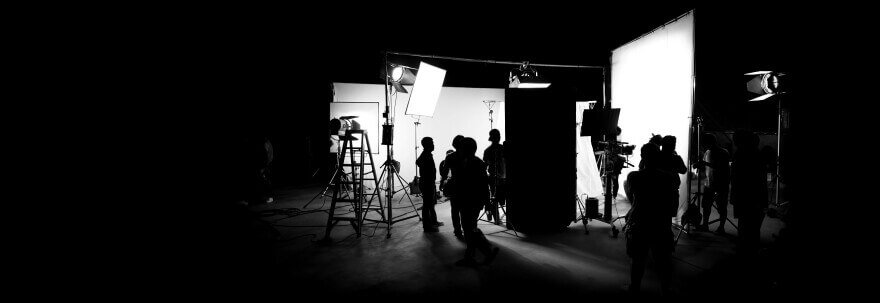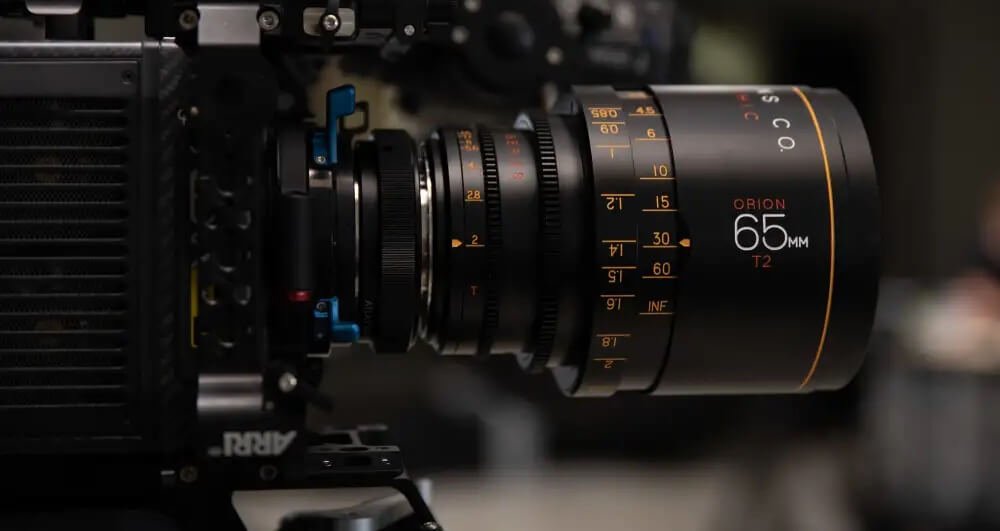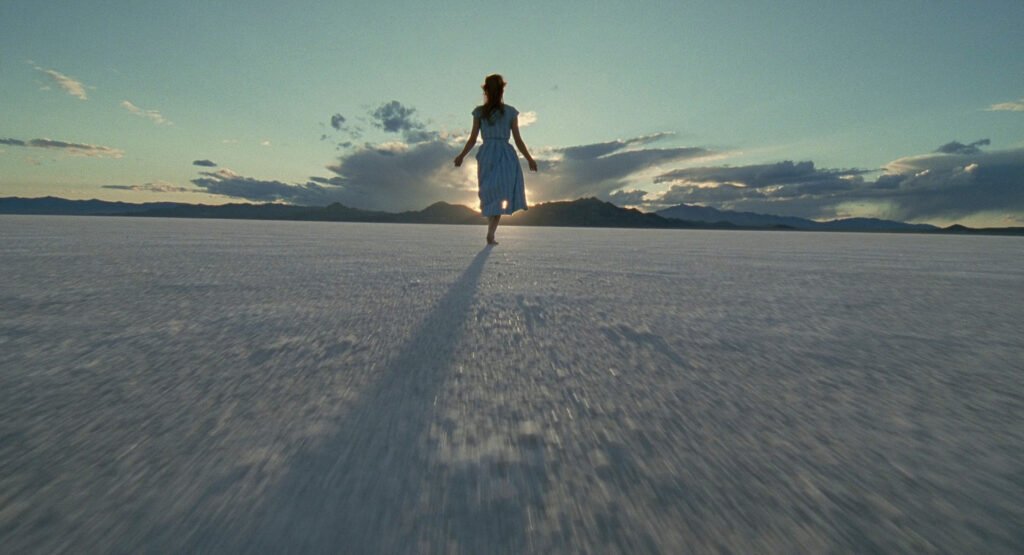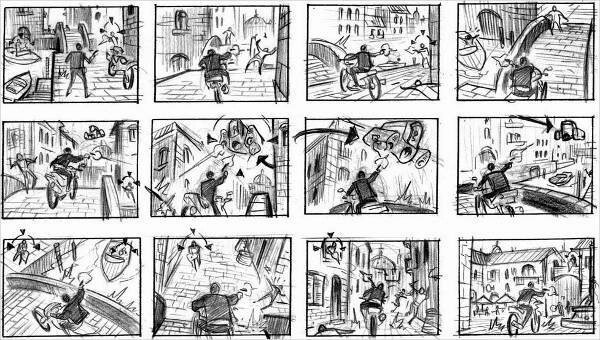Cinematographer vs Videographer: When it comes to visual storytelling, two professionals are essential: the cinematographer and the videographer. While both play pivotal roles in capturing moving images, their responsibilities, scope, and artistic approaches differ significantly. Cinematographers, also known as Directors of Photography (DP), are the visual architects behind the lens, crafting the aesthetic and emotional impact of a film or video project. They are responsible for translating the director’s vision onto the screen, making critical decisions about camera angles, lighting, and composition to create a cohesive visual narrative.
On the other hand, videographers are the versatile and adaptable storytellers who document live events, interviews, and corporate videos with finesse. They possess a keen eye for capturing candid moments and are skilled at working independently or with a small team to deliver high-quality video content. As the demand for videography careers surges, understanding the nuances between these roles becomes necessary for industry professionals and aspiring visual storytellers alike.
We’ll look at the key differences between cinematographers and videographers, exploring their unique contributions to the art of visual storytelling. From the scope of their work and the tools they use to the artistic vision they bring to the table, we’ll unravel the intricacies of these two essential roles in the world of video production. Whether you’re a filmmaker, a business owner, or an aspiring visual storyteller, this article will provide you with valuable insights into the distinct roles of cinematographers and videographers, helping you make informed decisions when it comes to your own projects.

Table of Contents
The Role of a Cinematographer:
Cinematographers are the visual masterminds behind the camera, responsible for crafting the overall look and feel of a film or video project. They work closely with the director to translate their vision onto the screen, using their deep understanding of the technical and artistic aspects of filmmaking, including camera operation, lighting techniques, and composition.
One of the primary responsibilities of a cinematographer is to establish the visual style of a project by collaborating with the creative team to develop a cohesive aesthetic that aligns with the story and emotional tone. They make decisions about camera angles, lens and filter choices, Look Up Tables (LUTs) and lighting setups to create the desired mood and atmosphere.
Cinematographers also play a crucial role in the storytelling process, using their expertise in visual language to guide the viewer’s eye and evoke specific emotions through carefully composed shots and camera movements. They create powerful visual narratives that enhance the overall impact of the story.
In addition to their creative contributions, cinematographers manage the technical aspects of the camera department, overseeing the selection of equipment and working closely with the lighting and grip departments to design and implement setups that support the look and feel of the film. They lead a team of camera operators and assistants, providing guidance and direction throughout the production process.
The role of a cinematographer extends into post-production, where they work with the director and colorist to ensure that the final version of the film maintains the intended visual style and emotional impact.
The Role of the Videographer:
Videographers are skilled at capturing high-quality video content across a wide range of settings and genres, from weddings and corporate videos to event coverage and real estate videos. They possess a versatile skill set that allows them to adapt to the unique challenges and requirements of each project they undertake.
One of the key strengths of videographers is their ability to work independently or with a small team, often responsible for every aspect of the video production process, from pre-production planning and shooting to editing and final delivery. This requires a high level of self-sufficiency, resourcefulness, and the ability to wear multiple hats.
Videographers are adept at capturing candid and authentic moments, requiring quick thinking, adaptability, and the ability to work under pressure in dynamic situations. They also possess strong storytelling abilities, using their knowledge of composition, lighting, and editing techniques to craft compelling narratives that engage and inform the viewer.
Videographers work with a wide range of equipment, from high-end cinema cameras to compact mirrorless systems and even smartphones, selecting the right tools for the job based on factors such as budget, shooting conditions, and final delivery requirements. This versatility allows them to deliver high-quality results across a variety of project types and scales.
One of the key advantages of working with a videographer is their ability to provide cost-effective solutions for smaller-scale projects, delivering professional-grade results without the need for extensive resources or large crews. Videographers also play a crucial role in the post-production process, using their editing skills to shape the final product and ensure that it effectively communicates the intended message to the audience.
The Scope of Work: Cinematographer vs Videographer
While both cinematographers and videographers work with moving images, the scope of their work differs significantly. Cinematographers are primarily involved in the production of feature films, high-end commercials, documentary, and television series, often with substantial budgets and large crews. They are typically involved in every stage of the production process, from pre-production planning to post-production refinement.
During pre-production, cinematographers collaborate with the director and creative team to develop the visual style and approach for the project, creating storyboards, scouting locations, and selecting appropriate equipment. Once production begins, they work closely with the director to block the action, light the set, compose shots, and guide the camera team to capture the shot.
In contrast, videographers typically work on a wider range of projects, including weddings, corporate videos, and live events, often with tighter budgets and shorter timelines. They are often responsible for every aspect of the production process, from planning and shooting to editing and final delivery, working closely with clients to understand and bring their vision to life.
One key difference between cinematography and videography is the level of specialization involved. Cinematographers often have a highly specialized skill set, with a deep understanding of camera technology, lighting techniques, and visual storytelling, and may specialize in a particular genre or style. Videographers, on the other hand, tend to be more generalists, with a broad range of skills that allow them to tackle a variety of project types and deliver high-quality results across a range of genres and formats.
Another difference is the level of collaboration involved. Cinematographers often work as part of a large team, collaborating closely with the director, production team, and other department heads, requiring strong communication and leadership skills. Videographers often work independently or with a small team, managing every aspect of the production process, which requires a high level of self-sufficiency and resourcefulness.
Tools of the Trade: Essential Equipment for Cinematographers and Videographers
Both cinematographers and videographers rely on a range of specialized equipment to capture stunning visuals and tell compelling stories. However, the specific tools and technologies they use can vary significantly depending on the needs of the project and the budget available.
Cinematographers often work with high-end cinema cameras, such as the Arri Alexa series, RED V-Raptor or Sony Venice. These cameras offer unparalleled image quality, dynamic range, and color depth, allowing cinematographers to capture stunning visuals that meet the demands of the big screen. Cinema cameras are often paired with a range of specialized lenses, filters, and accessories to achieve specific creative effects and enhance the visual storytelling.
In addition to cameras, cinematographers also rely heavily on lighting equipment to shape the mood and atmosphere of a scene. They use a variety of lighting fixtures, including spotlights, floodlights, and soft boxes, to create intricate lighting setups that support the emotional tone of the story. Cinematographers must have a deep understanding of color theory, light quality, and shadow placement to create visually stunning and emotionally resonant images.
Videographers, on the other hand, often work with a more diverse range of equipment, depending on the needs of the project and the budget available. They may use professional-grade video cameras, such as the Sony FS7 or the Canon C300, which offer high-quality image capture and a range of features designed for video production. However, they may also use more compact and affordable options, such as mirrorless cameras or even smartphones, depending on the specific requirements of the project.
In addition to cameras, videographers also rely on a range of supporting equipment to capture high-quality audio and stabilize their shots. This may include external microphones, audio recorders, and stabilizing rigs such as gimbals or tripods. Videographers must be skilled at selecting the right tools for the job, taking into account factors such as portability, durability, and ease of use.
Post-production is another area where cinematographers and videographers rely on specialized tools and software. Cinematographers often work with colorists using high-end color grading software, such as DaVinci Resolve or Baselight, to fine-tune the look and feel of their footage. They collaborate closely with post-production teams to ensure that the final product meets the highest standards of quality and artistic integrity.
Videographers, on the other hand, often handle the entire post-production process themselves, using a range of editing and effects software to craft the final product. They may use tools such as Adobe Premiere Pro, Photoshop, After Effects, Final Cut Pro, or Da Vinci Resolve, depending on their level of expertise and the complexity of the project. Videographers must be skilled at organizing and managing large amounts of footage, as well as using editing techniques to create engaging and dynamic final products.

The Art of Visual Storytelling: Cinematography and Videography Techniques
At the heart of both cinematography and videography is the art of visual storytelling. Both disciplines use a range of techniques and approaches to create compelling and emotionally resonant images that support the narrative and themes of the project.
Cinematographers are masters of visual language, using techniques like composition, camera movement, and lighting to guide the viewer’s eye and evoke specific emotional responses. Composition involves carefully selecting the placement of subjects, lines, and shapes within the frame to create visually striking and thematically relevant images. Camera movement techniques, such as panning, tilting, and tracking, create dynamic and engaging shots that draw the viewer into the story. Lighting is used to create mood, atmosphere, and visual interest, with cinematographers employing techniques like three-point lighting or chiaroscuro to shape the emotional tone of a scene and guide the viewer’s attention.
Videographers rely on many of the same visual storytelling techniques as cinematographers but often with a more practical and adaptable approach. They use composition, camera movement, and lighting to create engaging and dynamic shots that support the project’s goals. One of the key strengths of videography is its ability to capture candid and authentic moments as they unfold, with videographers anticipating key moments and reacting quickly to capture them on camera.
Editing is another critical element of videography, with videographers using techniques like montage, cross-cutting, and rhythm to shape the pacing and flow of the final product. They must have a keen understanding of story structure and the ability to craft engaging narratives that keep the viewer invested from beginning to end.
Sound is also crucial in videography, creating immersion and emotional depth. Videographers must be skilled at capturing high-quality audio on location and using music and sound design in post-production to enhance the emotional impact of the final product and guide the viewer’s experience.

Choosing the Right Professional for Your Project
When it comes to choosing between a cinematographer and a videographer for your project, there are a number of factors to consider. The first and most important consideration is the scope and scale of your project. If you are working on a large-scale production, such as a feature film or high-end commercial, a cinematographer is likely the best choice. They have the specialized skills, experience, and equipment needed to create stunning visuals that meet the demands of the big screen.
On the other hand, if you are working on a smaller-scale project, such as a wedding video or corporate promotional piece, a videographer may be the better option. They are skilled at working efficiently and creatively within budget constraints, and can deliver high-quality results without the need for extensive resources or large crews.
Another important factor to consider is the level of specialization required for your project. If you are looking for a specific visual style or aesthetic, a cinematographer with experience in that genre or style may be the best choice. They can bring a level of expertise and creative vision to the project that a generalist videographer may not be able to match.
However, if your project requires a more general skill set and the ability to adapt to a variety of shooting situations, a videographer may be the better option. They are skilled at working quickly and efficiently across a range of project types, and can often provide a more cost-effective solution for smaller-scale productions.
Budget is another critical consideration when choosing between a cinematographer and a videographer. Cinematographers often command higher rates and require more extensive resources, such as specialized equipment and larger crews. If you have a limited budget, a videographer may be the more practical choice, as they can often deliver high-quality results with a more streamlined production process.
Ultimately, the choice between a cinematographer and a videographer depends on the specific needs and goals of your project. By carefully considering factors such as scope, specialization, and budget, you can make an informed decision that ensures the best possible results for your production.
Collaboration and Communication: Working with Cinematographers and Videographers
Effective collaboration and communication are essential for success, regardless of whether you choose a cinematographer or a videographer for your project. Both professionals rely on a close working relationship with the director, producers, and other key members of the creative team to bring the vision for the project to life.
When working with a cinematographer, it is crucial to establish a clear and shared vision for the project from the outset. The cinematographer should be involved in the creative process from the earliest stages, collaborating with the director and other key team members to develop the visual style and approach. During production, the cinematographer works closely with the director to execute the visual plan on set, communicating effectively with the camera and lighting teams and adapting to changing conditions.
When working with a videographer, communication and collaboration may take a slightly different form due to their independent or small team work style. Videographers may have more direct interaction with the client or stakeholders throughout the production process, making it important to establish clear expectations and goals from the outset and communicate regularly to ensure the project meets their needs. During production, videographers must work quickly and efficiently, making creative decisions on the fly while ensuring the final product meets the client’s expectations.
Post-production is another critical stage where collaboration and communication are essential. Cinematographers often work closely with the director and editor to ensure the final cut maintains the intended visual style and emotional impact, providing input on color grading, visual effects, and other techniques. For videographers, post-production is often a more solitary process, but effective communication with the client is still essential to ensure the final video meets their expectations and communicates their intended message.
Ultimately, successful collaboration and communication between the cinematographer or videographer and the rest of the creative team is essential for bringing the vision for the project to life. By establishing clear goals, maintaining open lines of communication, and being willing to adapt and problem-solve as needed, these professionals can create stunning visual stories that engage and inspire audiences.

The Future of Visual Storytelling: Emerging Trends and Technologies
As visual storytelling continues to evolve, both cinematographers and videographers must stay up-to-date with the latest trends and technologies in their field. From advances in camera technology to new platforms for distribution and consumption, the landscape of film and video production is constantly changing.
One of the biggest trends in recent years has been the rise of digital filmmaking. With high-quality digital cinema cameras, cinematographers have new creative possibilities, such as shooting in low light conditions or capturing images with higher resolution and color depth. Advances in post-production technology have also made it easier to manipulate and enhance digital footage, allowing cinematographers and videographers to create stunning visuals with powerful software tools for color grading, compositing, and visual effects.
Another major trend is the rise of mobile and web-based platforms for distribution and consumption. With smartphones and tablets, audiences are consuming video content on a wider range of devices, creating new opportunities for videographers and content creators to reach audiences directly. Social media platforms like YouTube, Instagram, and TikTok have become important outlets for visual storytelling, with millions of users creating and sharing short-form video content daily, presenting new challenges and opportunities for videographers to create engaging and shareable content that stands out in a crowded online landscape.
Virtual reality (VR) and augmented reality (AR) are also emerging as important new frontiers in visual storytelling, allowing creators to immerse audiences in fully realized digital environments and create new possibilities for interactive and experiential storytelling. As these technologies evolve and become more accessible, they are likely to play an increasingly important role in the future of film and video production.
As the landscape of visual storytelling evolves, both cinematographers and videographers will need to adapt and stay current with the latest tools and techniques, which may involve investing in new equipment, learning new software and workflows, and experimenting with new formats and platforms for distribution. However, the fundamental principles of visual storytelling remain as important as ever, with the key to creating compelling and engaging visual content being a strong creative vision, a deep understanding of the audience, and the ability to craft powerful and emotionally resonant stories.
Conclusion
Cinematographers and Videographers play distinct yet equally important roles. Cinematographers are the visual architects of the film world, crafting stunning and immersive cinematic experiences, while videographers are the versatile and adaptable storytellers of the digital age, capturing the full spectrum of human experience across a wide range of mediums and platforms.
Although the specific tools, techniques, and workflows used by cinematographers and videographers may differ, both professions share a common goal: to create powerful and engaging visual stories that connect with audiences on a deep and meaningful level. Whether working on a big-budget Hollywood production or a small-scale corporate video, these visual storytellers use their creativity, technical skill, and emotional intelligence to craft compelling narratives that inform, entertain, and inspire.
As the world of visual storytelling continues to evolve and new technologies emerge, the roles of cinematographers and videographers are likely to continue to change and adapt. However, the fundamental principles of visual storytelling – the ability to connect with audiences, evoke emotion, and create meaning through the power of moving images – will remain as important as ever.
For anyone looking to enter the world of visual storytelling, the key to success is a combination of technical skill, creative vision, and a deep understanding of the audience. By staying current with the latest tools and techniques, collaborating effectively with other members of the creative team, and always striving to tell powerful and meaningful stories, visual storytellers can continue to push the boundaries of what is possible and create works of art that will be remembered for generations to come.
As the lines between Cinematography and Videography continue to blur and new opportunities for visual storytelling emerge, one thing is certain: the power of moving images to connect with audiences and shape our understanding of the world will only continue to grow. As long as there are stories to be told and emotions to be captured, there will always be a need for skilled and passionate visual storytellers to bring those stories to life.
What distinguishes filmmaking from cinematography?
Filmmaking is the overarching process of creating a film, encompassing all aspects from pre-production to post-production, including scriptwriting, casting, directing, cinematography, editing, and sound design. Cinematography, on the other hand, is a specific aspect of filmmaking that focuses on the visual elements of the film, such as camera work, lighting, and composition. Cinematographers, also known as Directors of Photography (DP), are responsible for translating the director’s vision onto the screen and creating the visual aesthetic of the film.
How does a videographer differ from a Director of Photography (DP)?
A Director of Photography (DP), also known as a cinematographer, is typically associated with the film industry and works on larger-scale productions such as feature films, television series, and commercials. They are responsible for the overall visual style of the project and work closely with the director to achieve the desired look and feel. A videographer, on the other hand, often works on smaller-scale projects such as corporate videos, weddings, events, and documentaries. They are usually responsible for all aspects of the video production process, from planning and shooting to editing and final delivery. While a DP typically has a more specialized role and works with a larger crew, a videographer is often a one-person operation or works with a small team, handling multiple aspects of the production process.
What are the key differences between cinematography and cinematics?
Cinematography refers to the art and technique of capturing visual images for a film or video project. It involves the creative and technical decisions made by the cinematographer, such as camera placement, lens selection, lighting, and composition, to create the desired visual aesthetic and storytelling effect. Cinematics, on the other hand, refers to the overall visual style and look of a film or video project, which is the result of various elements such as cinematography, production design, visual effects, and color grading. Cinematics encompasses the broader visual language and aesthetic of the project, while cinematography specifically focuses on the camera work and lighting aspects of the production.
What sets a cinematographer apart from a cameraman?
A cinematographer, also known as a Director of Photography (DP), is responsible for the overall visual style and look of a film or video project. They work closely with the director to interpret the script and create the visual language of the project, making creative and technical decisions related to camera work, lighting, and composition. A cinematographer typically has a higher level of creative input and decision-making power compared to a cameraman.
A cameraman, on the other hand, is a more general term for someone who operates a camera. They are responsible for capturing the footage according to the instructions provided by the cinematographer or director. A cameraman typically has a more technical role, focusing on the operation of the camera equipment and ensuring that the shots are properly framed, focused, and exposed. While a cinematographer is involved in the creative and aesthetic aspects of the production, a cameraman is primarily concerned with the technical execution of the shots.